What’s New in vSAN 8 Update 2
During VMware Explore 2023 vSAN 8 Update 2 was announced with the following key features:
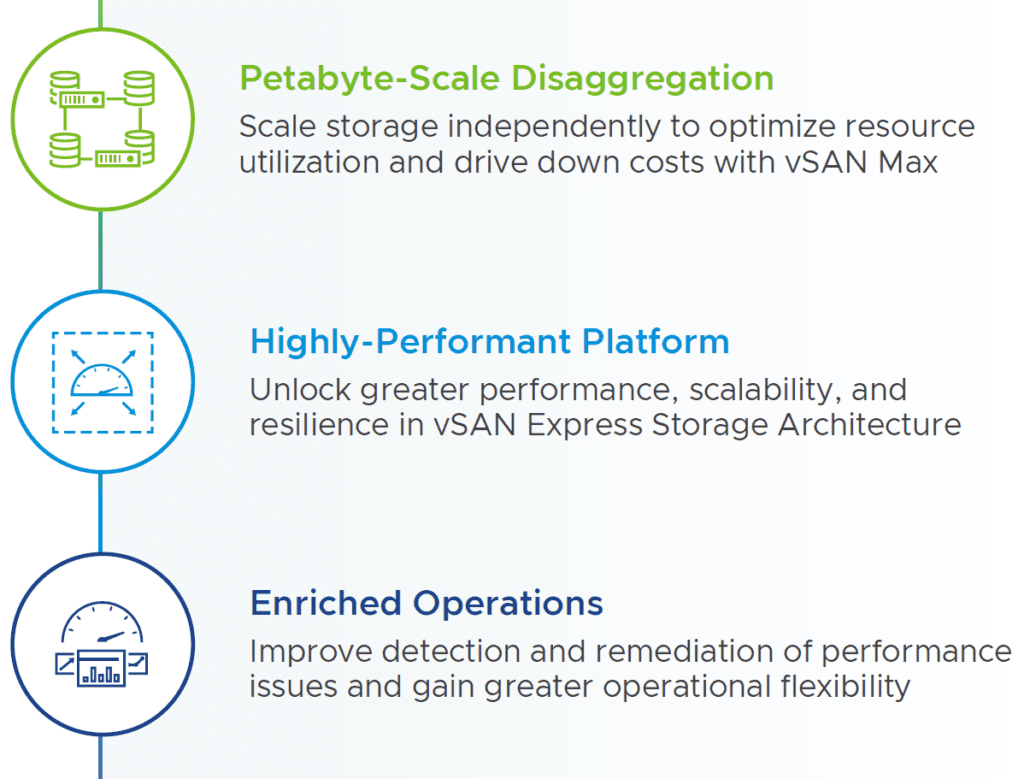
vSAN Max
The first big thing in my opinion is for sure vSAN Max as it is a from vSAN point of view new approach as it is a „Storage only“ cluster. The vision from the product team here is to expand the flexibility and choice to maximize resource utilization and lower TCO.


One main goal of vSAN Max is to unbound scalability and flexibility, this should be archived with the following main and new features:

this makes vSAN Max ideal for the following use cases:
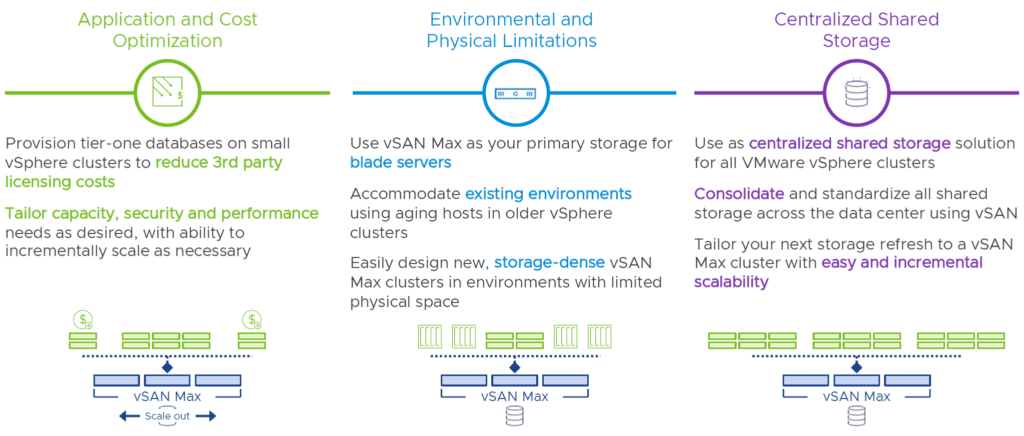
so the target is clear as the use of vSAN Max should be the primary or augmented storage for vSphere Clusters with the use of native technologies in vSAN ESA for performance and efficiency e.g. ESA snapshots, communication stack, and customizable storage policies. It is a flexible, scalable, and resilient storage across Single site and Multiple sites as stretched cluster.
For comparing traditional HCI to disaggregated storage in vSAN ESA, here is an overview:
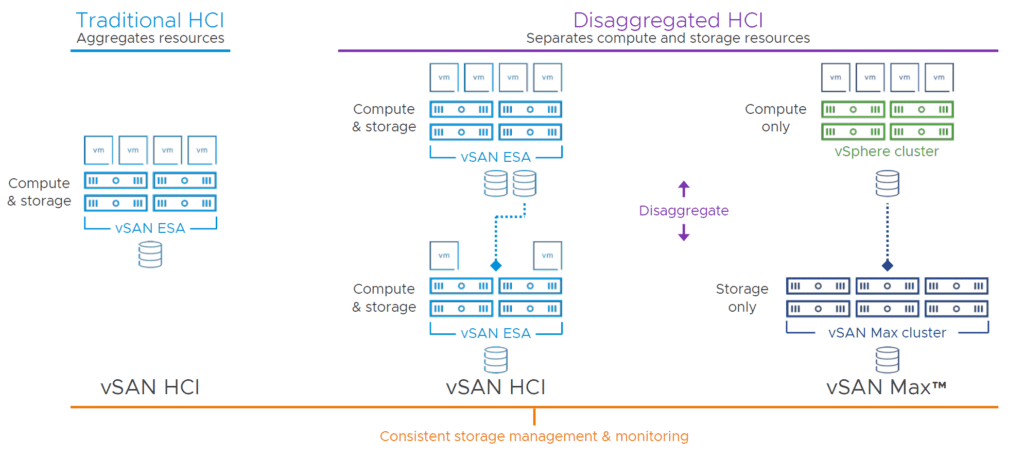
As you can see from my point of view we are going „Back to Future“ as some of you may remember the old days when we have already a real „Central Storage“ attached via e.g. fiber channel to different vSphere Clusters. I’m really excited about what the new „Disaggregated HCI“ future will bring to us.
to go even more in detail here we go with another comparison of „Client“ and „Server“ Clusters:
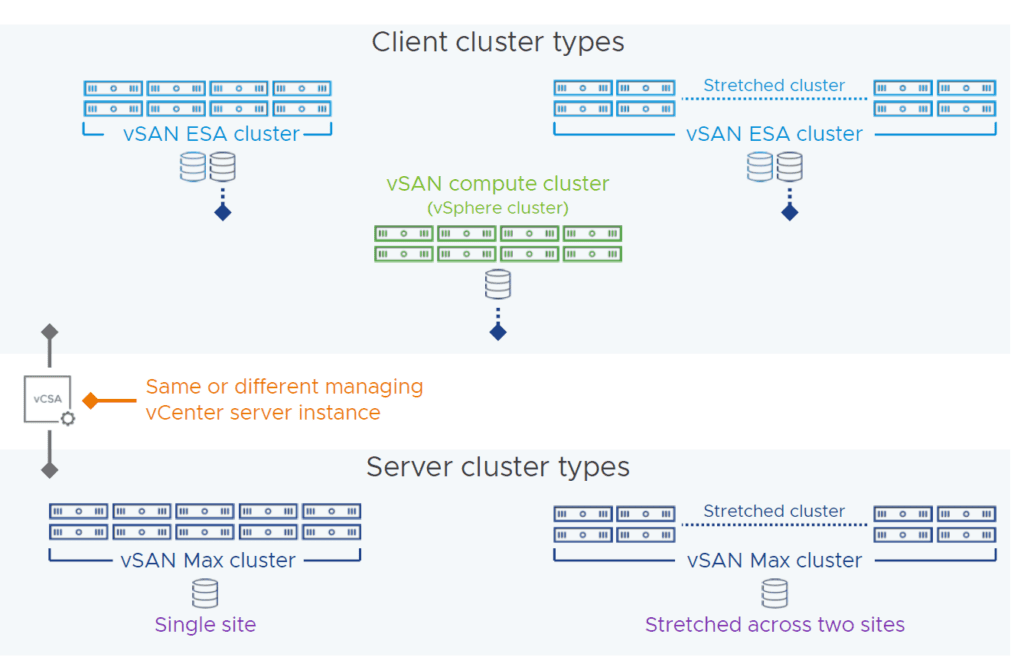
Client Clusters
Can be traditional vSphere clusters, and vSAN ESA Clusters. They can be managed by same or different vCenter server than vSAN Max clusters.
Server Clusters
Deploy vSAN Max as a single site cluster, or stretched cluster. Transmits storage traffic to/frim client clusters using native vSAN communication stack.
vSAN 8 Update 2 Core Platform Advances
vSAN Native file services for vSAN ESA
First things first, we are getting Native file services for vSAN ESA

the benefit of the power of ESA when running vSAN file services native is improved space efficiency, better performance, and smaller failure domains. It supports NFS and SMB protocols for traditional and cloud-native clients. Within vSAN 8 Update 2 native file service archive feature parity with the know vSAN OSA native file services.
Improved Interoperability with VMware Cloud Foundation
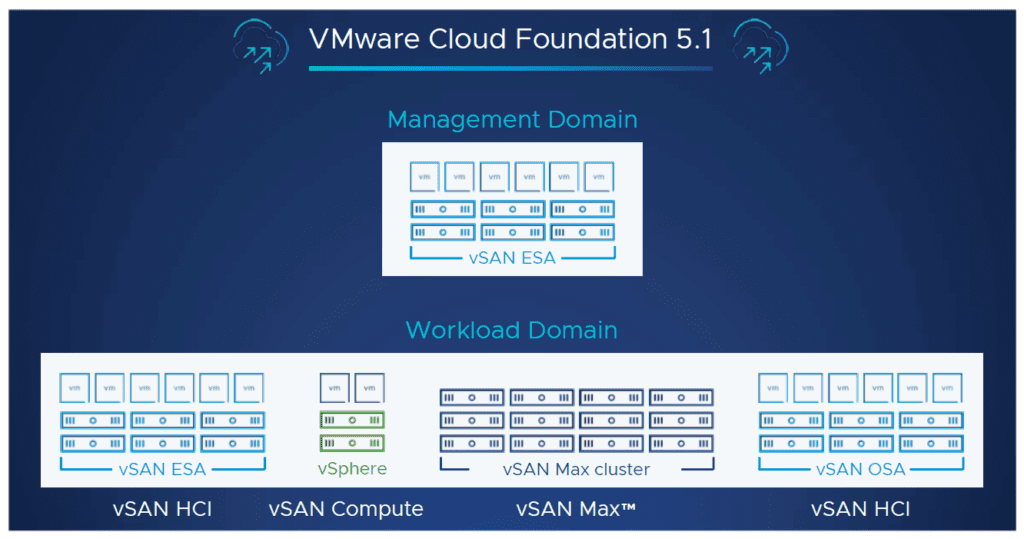
starting with VMware Cloud Foundation 5.1 where vSAN 8 Update 2 will be contained support of vSAN ESA when used in VCF workload and management domains. You can also mix OSA and ESA clusters. Also within VCF 5.1 release the workflows are updated to accommodate ESA.
Bringing the efficiency and performance of ESA to VCS means also environments using disaggregation, including server clusters running vSAN Max or vSAN HCI.
Higher Throughput & Lower Latency on Write Intensive Workloads
within the Release of vSAN 8 Update 2 there is an Adaptive Write Path Optimization in vSAN ESA.
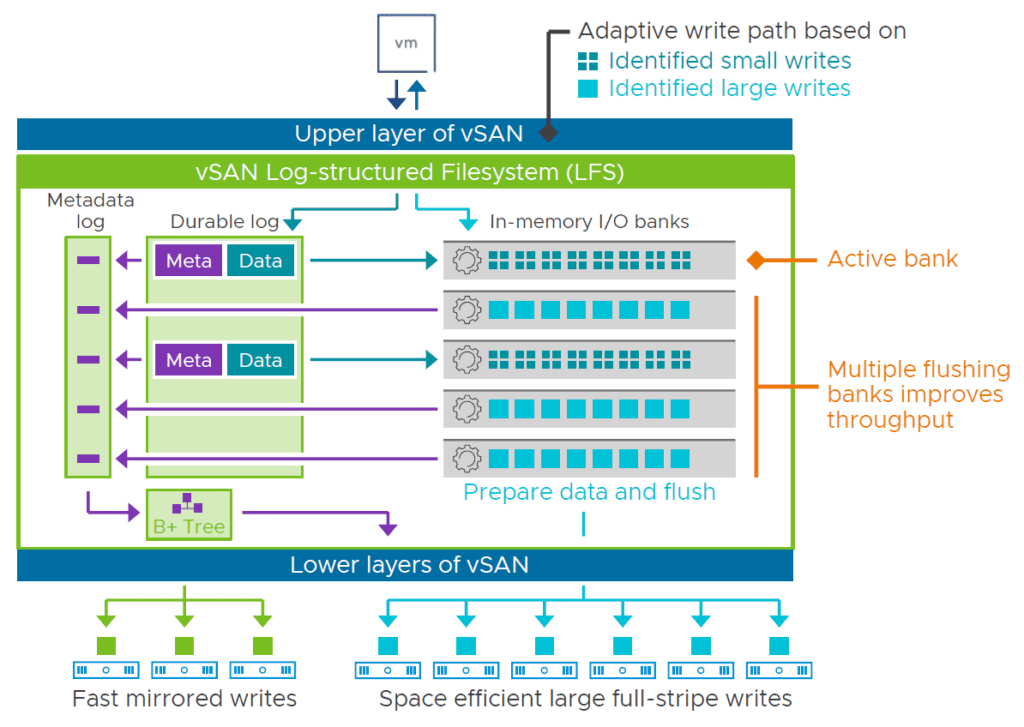
it uses more in-memory I/O banks to process incoming writes more quickly. The dynamic and scale are based on the demands of the workloads. As this improves aggregate and single object (VMDK) performance in vSAN ESA results in higher IOPS, higher throughput, and lower latency.
Improved Performance for Disaggregated Environments
also implemented in vSAN 8 Update 2 ESA Adaptive Write Path for disaggregated storage.
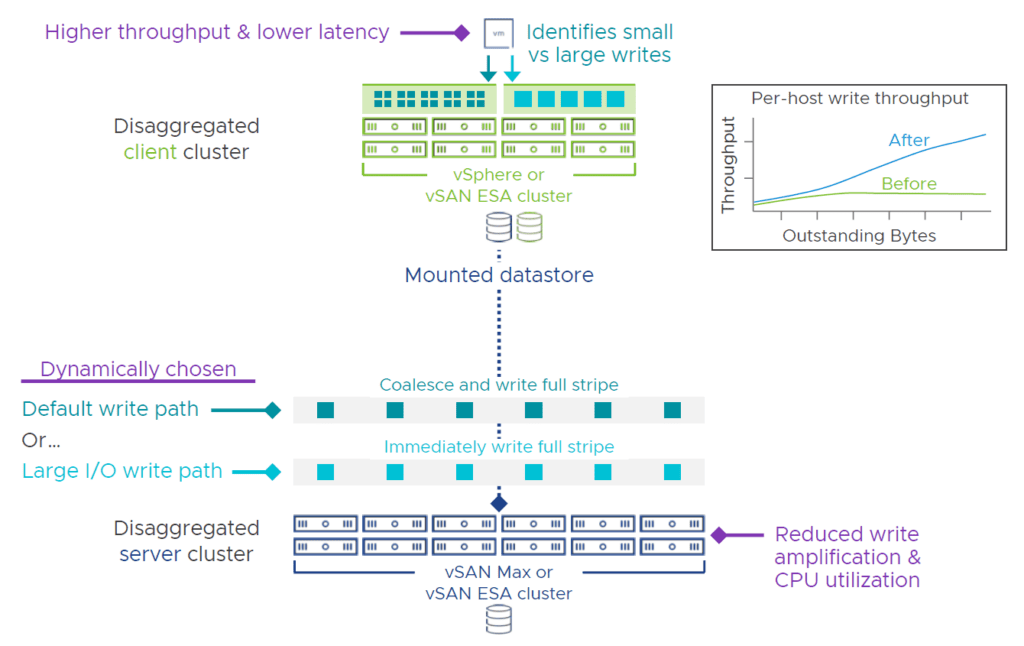
here dynamically vSAN uses optimal write path for guest VM writes with Default write path or Large I/O write path. Also, this release includes other optimizations made to Adaptive Write Path with archiving better performance in disaggregated environments. Write throughput can up to 200% higher and latency can be reduced up to 70%.
Higher Throughput and IOPs for I/O Intensive Workloads
Parallelism with vSAN ESA’s object manager client is improved within vSAN 8 Update 2.

so vSAN ESA 8 Update 2 is able to deliver higher IOPS and throughput for a single object on I/O intensive workloads. In addition, the I/O processing improvements of vSAN 8 Update 1 are of course also included. Which reduces potential bottleneck conditions high in the storage stack. These improved features are most beneficial for Mission-critical applications, databases, resource-intensive VMs, and Single object (VMDK) performance.
Bringing vSAN ESA’s benefits to Small Data Centers and Edge
starting with vSAN 8 Update 2 a new ReadyNode profile is introduced and the support for Read-Intensive devices.
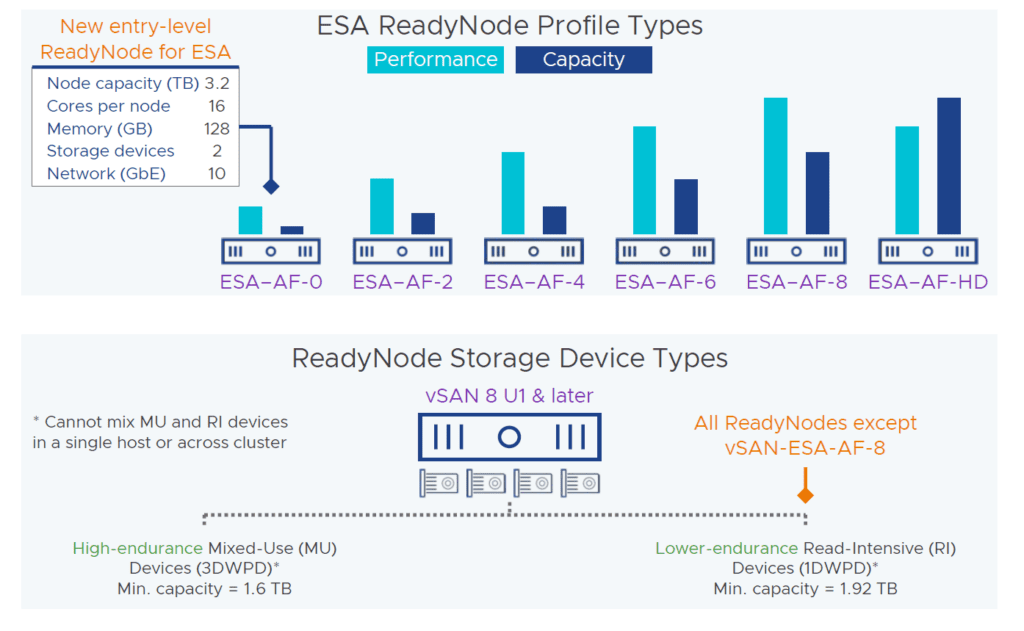
as you can see, the hardware requirements are not quite as high as before. Cores per host are now 16 instead of 32, and RAM is now only 128GB instead of 512GB. The number of storage devices required per host has also been reduced. In addition, vSAN ESA now works with 10Gbps networking – previously it required at least 25Gbps.
In my view, one of the best improvements in vSAN 8 Update 2 is that the hardware requirements have been reduced. With the new ReadyNode profile, vSAN ESA becomes usable and supported in small data centers and edge environments. For example, I can imagine a DR data center in a suitcase with a Dell XR4000. That gives completely new possibilities. As we getting dramatically lower TCO while benefitting from capabilities in ESA as „new Snapshots“, smaller failure domains, and improved efficiency.
Last but not least by supporting of „Read Intensive“ NVMe devices available in some ReadyNode profiles.
Enhanced Management
Making vSAN Easier to Deploy, Operate, and Optimize
Referring to advanced management which should make vSAN easier to install, operate and optimize, vSAN 8 Update 2 also contains some improvements, but I will only describe them here in this post at a high level in order not to make it even longer. If you are interested in more details please leave me a short comment below.
Auto-Policy Management improvements in vSAN ESA

Capacity overhead reporting improvements in vSAN ESA
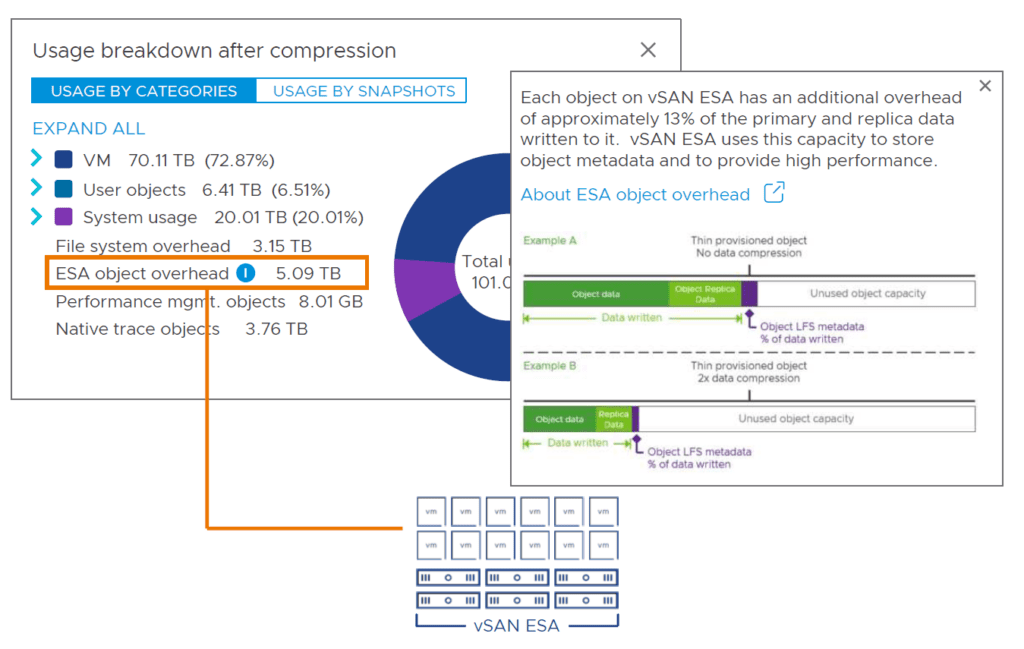
vSAN ESA Prescriptive Disk Claim
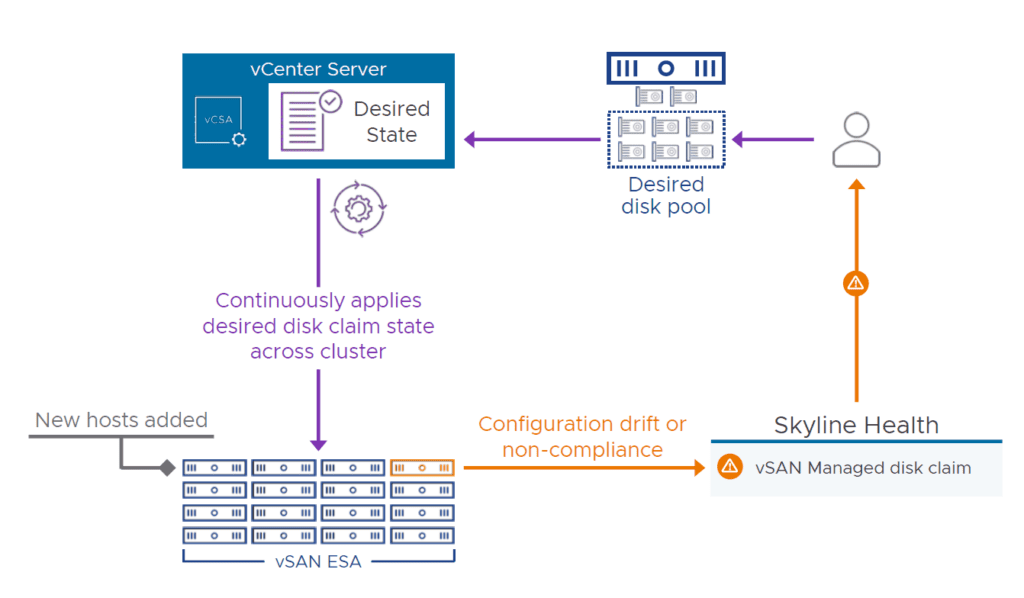
Support for key expiration with Data-at-Rest Encryption in vSAN OSA and ESA
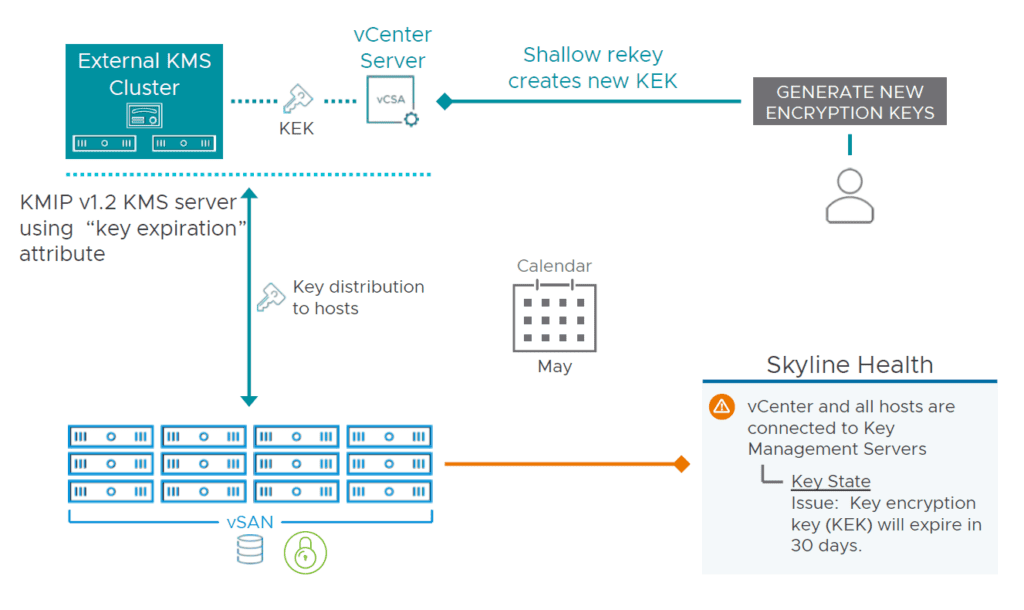
Skyline Health for vSAN remediation enhancements
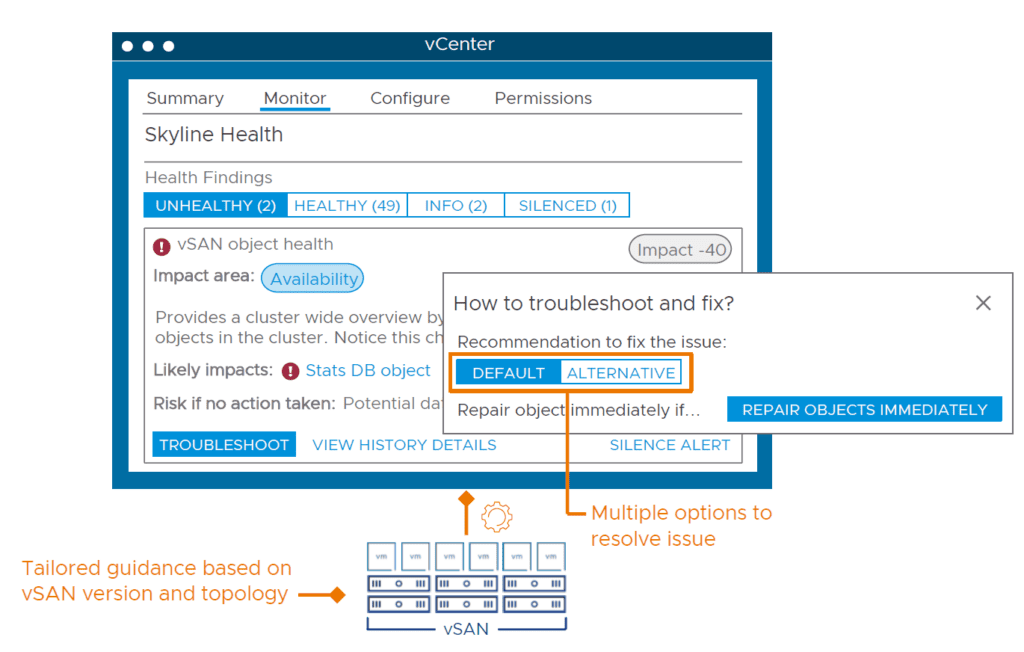
Top Contributors enhancements in vSAN OSA and ESA

I/O Trip Analyzer for 2-Node and Stretched Clusters in vSAN OSA and ESA
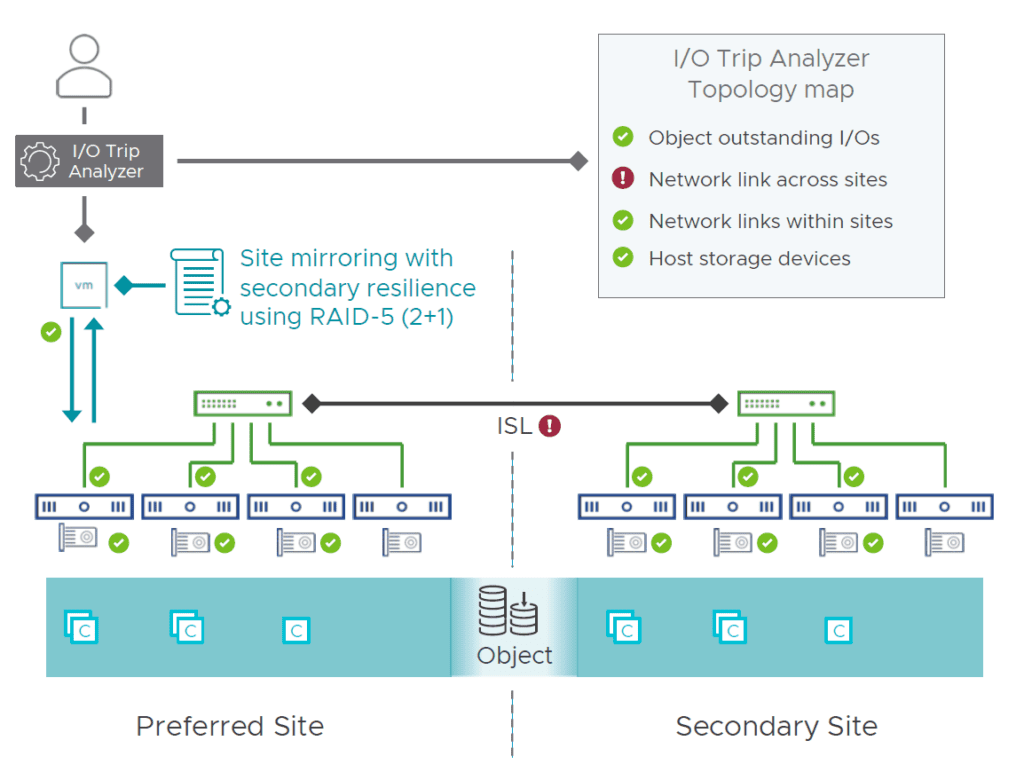
Witness Traffic Separation and other configuration improvements in vSAN OSA and ESA

Warp Up & Summary VMware vSAN 8 Update 2
In my opinion a really great release of VMware vSAN with a lot of interesting new or improved features. As said before vSAN Max is a real step forward in replacing traditional „central storage“ with the aim of improved flexibility through enhanced disaggregation with a storage-only cluster.
Also, the newly introduced ReadyNode Profile with the reduced hardware demand is a real step forward and so many customers will be able to use vSAN ESA in their smaller data centers, edge locations, or even DR „off the grid“ Data-Centers.
Last but not least we have an increase in performace with that release wich is also nice to have an for sure even more „Ease of Use“ through improvements with security and troubleshooting capabilities.
Good job VMware 😉 – Thanks a lot.

No responses yet